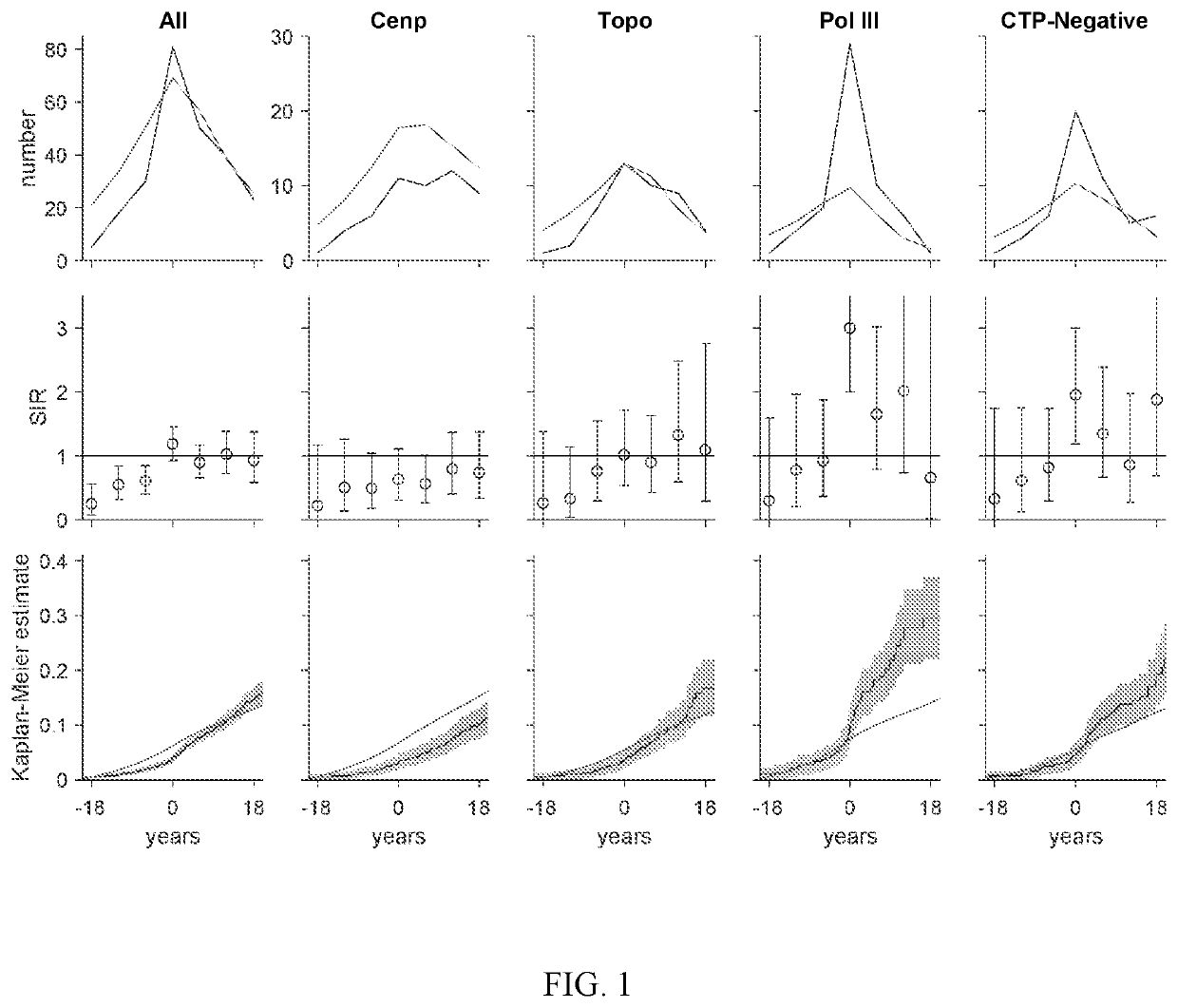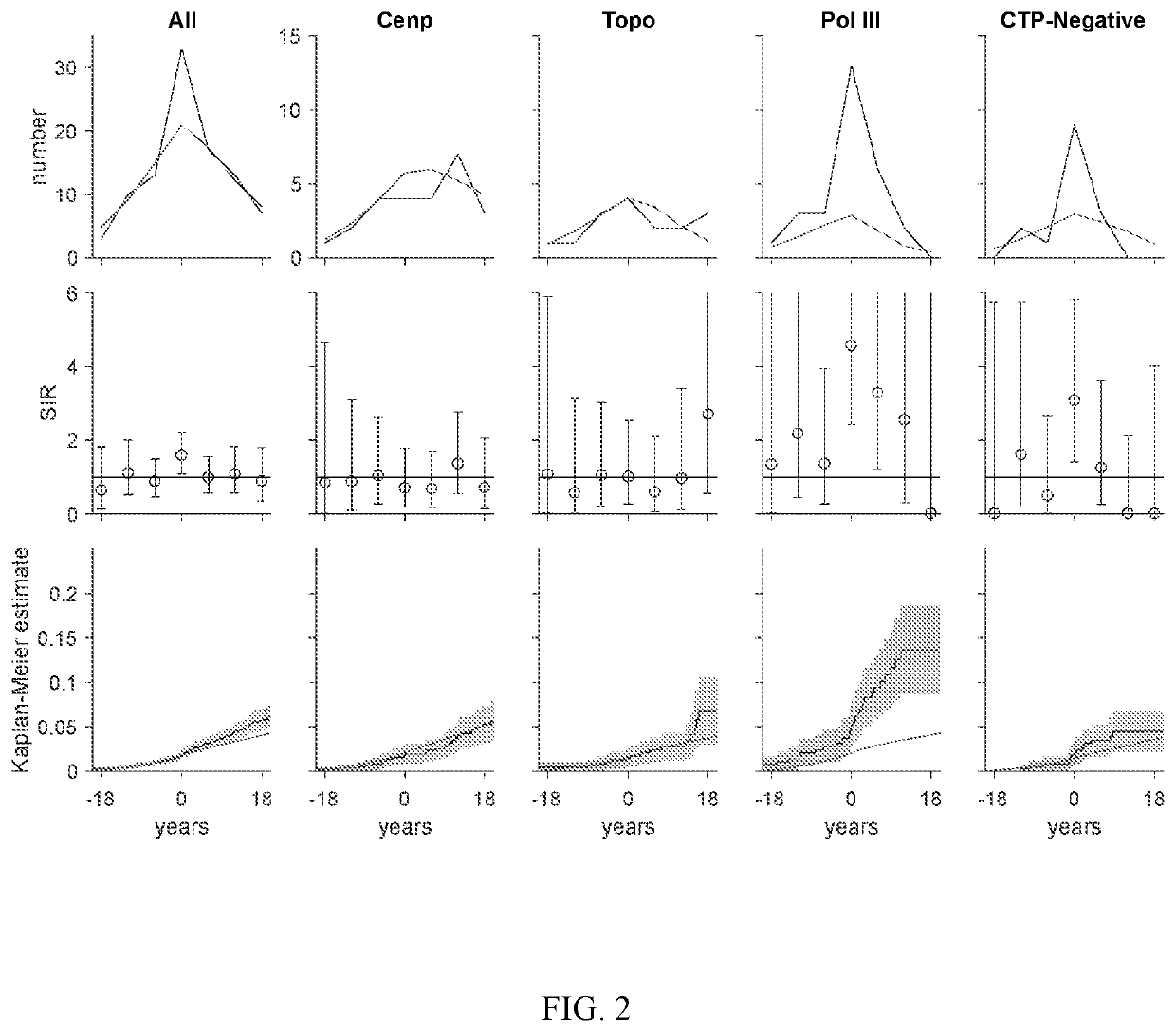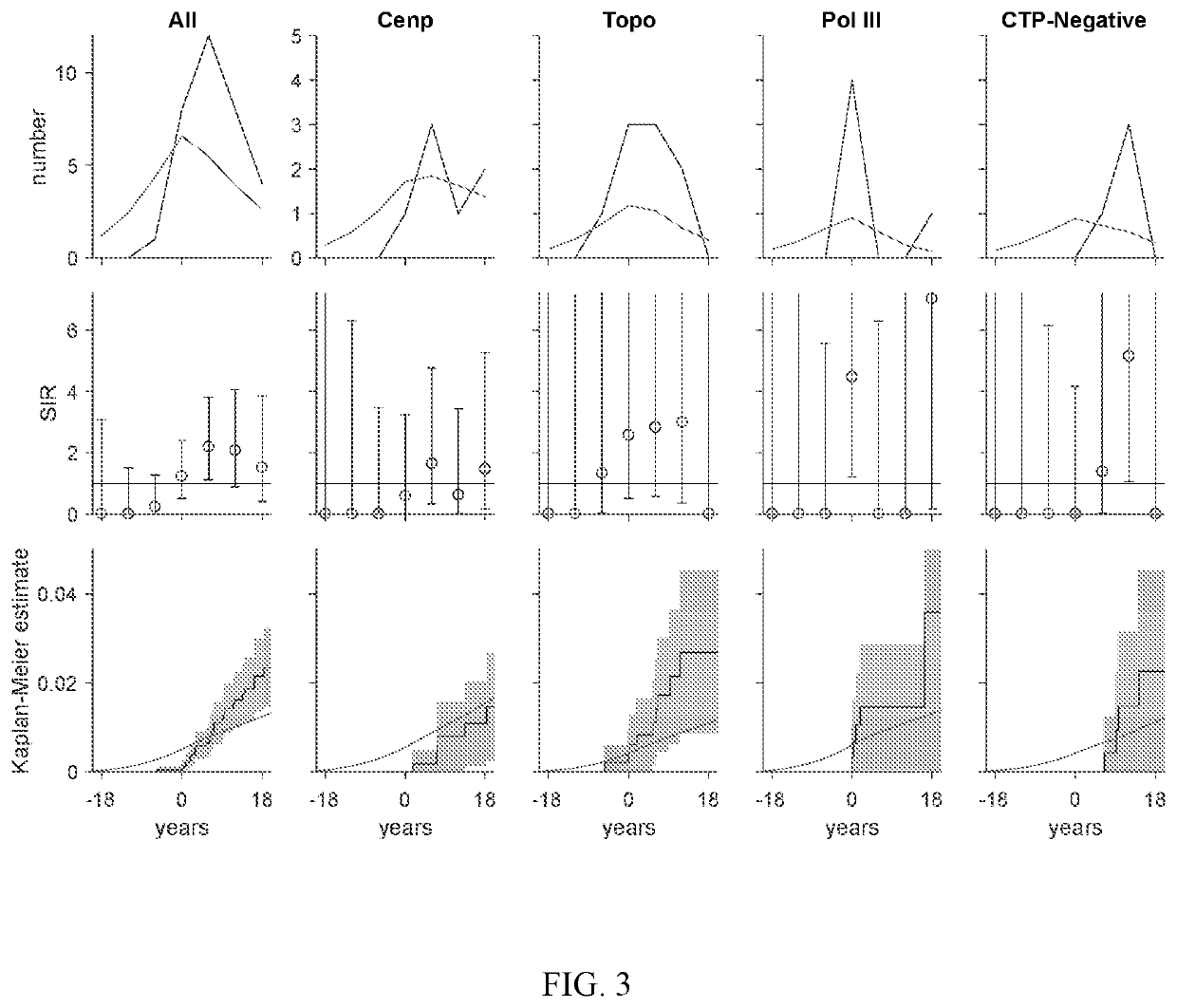Materials and methods for assessing cancer risk and treating cancer
a cancer risk and material technology, applied in the field of material and method for assessing and/or treating subjects, can solve the problems of higher cancer risk, cancer risk, cancer risk, etc., and achieve the effect of reducing the risk of cancer
- Summary
- Abstract
- Description
- Claims
- Application Information
AI Technical Summary
Benefits of technology
Problems solved by technology
Method used
Image
Examples
example 1
odies and Scleroderma Phenotype Define Subgroups at High-Risk or Low-Risk for Cancer
[0062]Cancer risk at scleroderma onset was examined in distinct serologic and phenotypic subsets relative to the general population. Three novel findings were demonstrated: (i) anti-pol patients are at increased risk for different types of cancer at scleroderma onset depending on whether they have limited or diffuse cutaneous disease; (ii) patients who are CTP-negative also have an increased cancer risk at scleroderma onset; and (iii) patients with anti-centromere antibodies are protected against cancer. These results suggested that this immune response can have potent anti-cancer effects, and that this subgroup or patients can represent the boundary condition for the scleroderma spectrum, where cancer induces the immune response which is almost completely effective in controlling the cancer. These findings can be used to develop guidelines for cancer screening in patients with new onset scleroderma....
example 2
l Autoantibodies Anti-POLR3-Positive SSc Patients
[0088]While the risk of short-interval cancer is increased in SSc patients with RNA polymerase III (POLR3) antibodies, ˜80% of anti-POLR3 patients never manifest a cancer.
[0089]A novel statistical algorithm was designed to identify new immune responses associated with the absence of cancer in POLR3-positive patients.
[0090]Experiments were performed with sera grouped by known antibody status, but differing cancer status, and whether additional specificities are associated with absence of cancer was determined. IPs were performed from radiolabeled HeLa lysates using sera from 10 different anti-POLR3 positive SSc patients. A subgroup of patients with anti-POLR3 but no cancer was identified as also having a novel anti-RNA polymerase I (RPA194) autoantibody (FIG. 5). The anti-RPA194 antibody was not detected in the anti-POLR3-positive cancer group (FIG. 5).
[0091]Subsequently, an additional 176 patients with anti-POLR3, 81 of whom (46%) had...
example 3
3 Antibodies as a Marker of Cancer Associated Scleroderma
[0093]This investigation validated the relationship between anti-RNPC3 antibodies and cancer and examined the associated clinical phenotype in a large sample of scleroderma patients.
Patients and Methods
Study Population and Associated Statistical Analyses
[0094]Patients with scleroderma and an available serum sample were identified through the IRB-approved Johns Hopkins Scleroderma Center database. All patients had scleroderma defined by 2013 American College of Rheumatology (ACR) classification criteria, 1980 ACR classification criteria, or having at least 3 of 5 CREST (calcinosis, Raynaud's, esophageal dysmotility, sclerodactyly, telangiectasia) syndrome features (van den Hoogen et al., 2013 Arthritis &Rheum., 65(11):2737-47; and Subcommittee for scleroderma criteria of the American Rheumatism Association Diagnostic and Therapeutic Criteria Committee. 1980 Arthritis &Rheumatism. 23(5):581-90). Demographic data, symptom onset d...
PUM
| Property | Measurement | Unit |
|---|---|---|
| time | aaaaa | aaaaa |
| time | aaaaa | aaaaa |
| physical examination | aaaaa | aaaaa |
Abstract
Description
Claims
Application Information
 Login to View More
Login to View More - R&D
- Intellectual Property
- Life Sciences
- Materials
- Tech Scout
- Unparalleled Data Quality
- Higher Quality Content
- 60% Fewer Hallucinations
Browse by: Latest US Patents, China's latest patents, Technical Efficacy Thesaurus, Application Domain, Technology Topic, Popular Technical Reports.
© 2025 PatSnap. All rights reserved.Legal|Privacy policy|Modern Slavery Act Transparency Statement|Sitemap|About US| Contact US: help@patsnap.com



